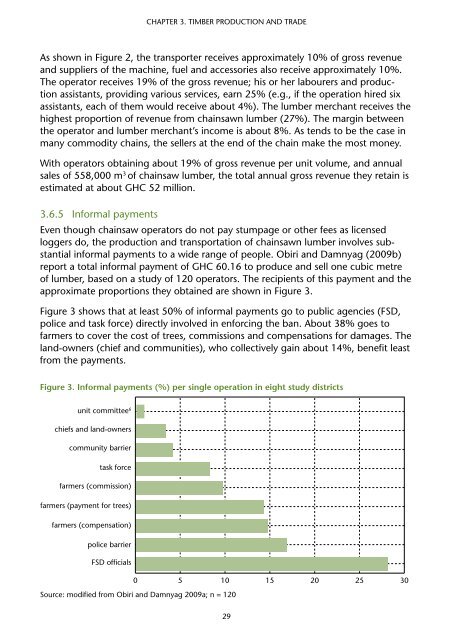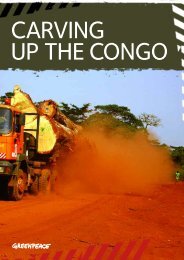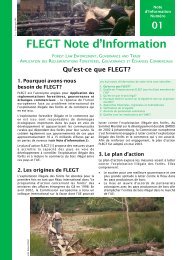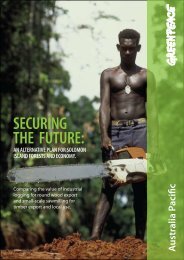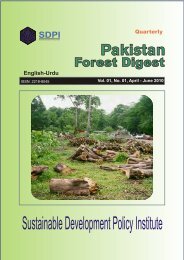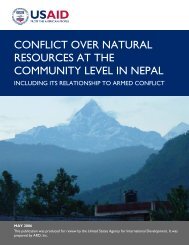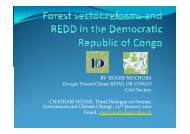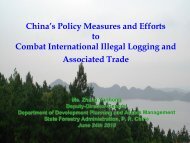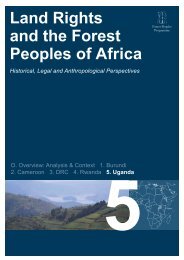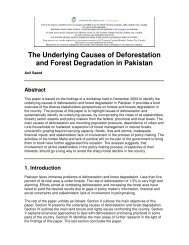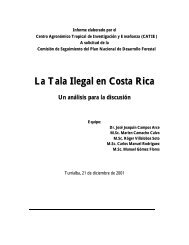CHAINSAW MILLING IN GHANA: CONTExT, DRIVERS ... - Fornis.net
CHAINSAW MILLING IN GHANA: CONTExT, DRIVERS ... - Fornis.net
CHAINSAW MILLING IN GHANA: CONTExT, DRIVERS ... - Fornis.net
- No tags were found...
Create successful ePaper yourself
Turn your PDF publications into a flip-book with our unique Google optimized e-Paper software.
Chapter 3. Timber production and tradeAs shown in Figure 2, the transporter receives approximately 10% of gross revenueand suppliers of the machine, fuel and accessories also receive approximately 10%.The operator receives 19% of the gross revenue; his or her labourers and productionassistants, providing various services, earn 25% (e.g., if the operation hired sixassistants, each of them would receive about 4%). The lumber merchant receives thehighest proportion of revenue from chainsawn lumber (27%). The margin betweenthe operator and lumber merchant’s income is about 8%. As tends to be the case inmany commodity chains, the sellers at the end of the chain make the most money.With operators obtaining about 19% of gross revenue per unit volume, and annualsales of 558,000 m 3 of chainsaw lumber, the total annual gross revenue they retain isestimated at about GHC 52 million.3.6.5 Informal paymentsEven though chainsaw operators do not pay stumpage or other fees as licensedloggers do, the production and transportation of chainsawn lumber involves substantialinformal payments to a wide range of people. Obiri and Damnyag (2009b)report a total informal payment of GHC 60.16 to produce and sell one cubic metreof lumber, based on a study of 120 operators. The recipients of this payment and theapproximate proportions they obtained are shown in Figure 3.Figure 3 shows that at least 50% of informal payments go to public agencies (FSD,police and task force) directly involved in enforcing the ban. About 38% goes tofarmers to cover the cost of trees, commissions and compensations for damages. Theland-owners (chief and communities), who collectively gain about 14%, benefit leastfrom the payments.Figure 3. Informal payments (%) per single operation in eight study districtsunit committee 6chiefs and land-ownerscommunity barriertask forcefarmers (commission)farmers (payment for trees)farmers (compensation)police barrierFSD officials0 5 10 15 20 25 30Source: modified from Obiri and Damnyag 2009a; n = 12029


